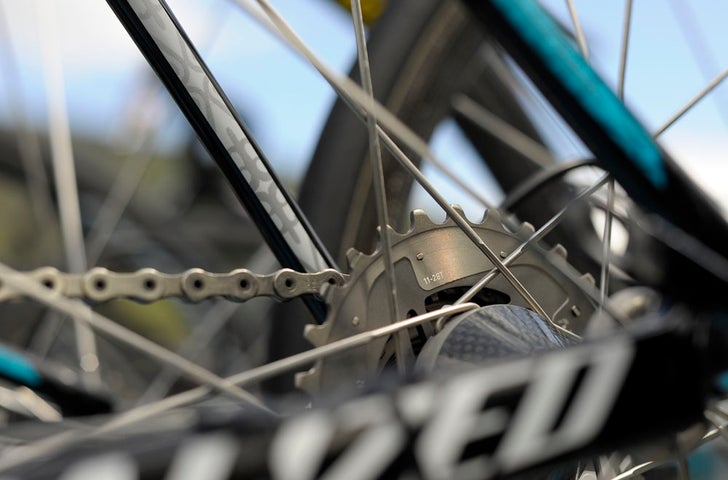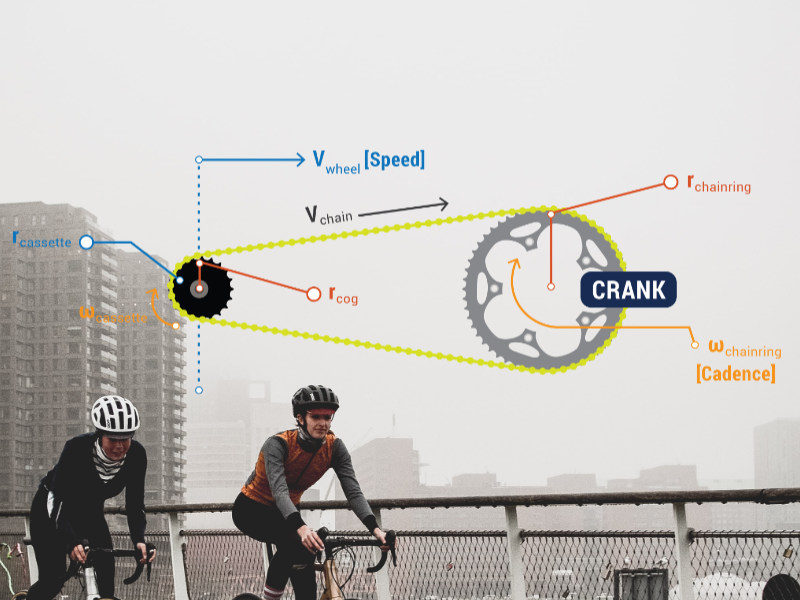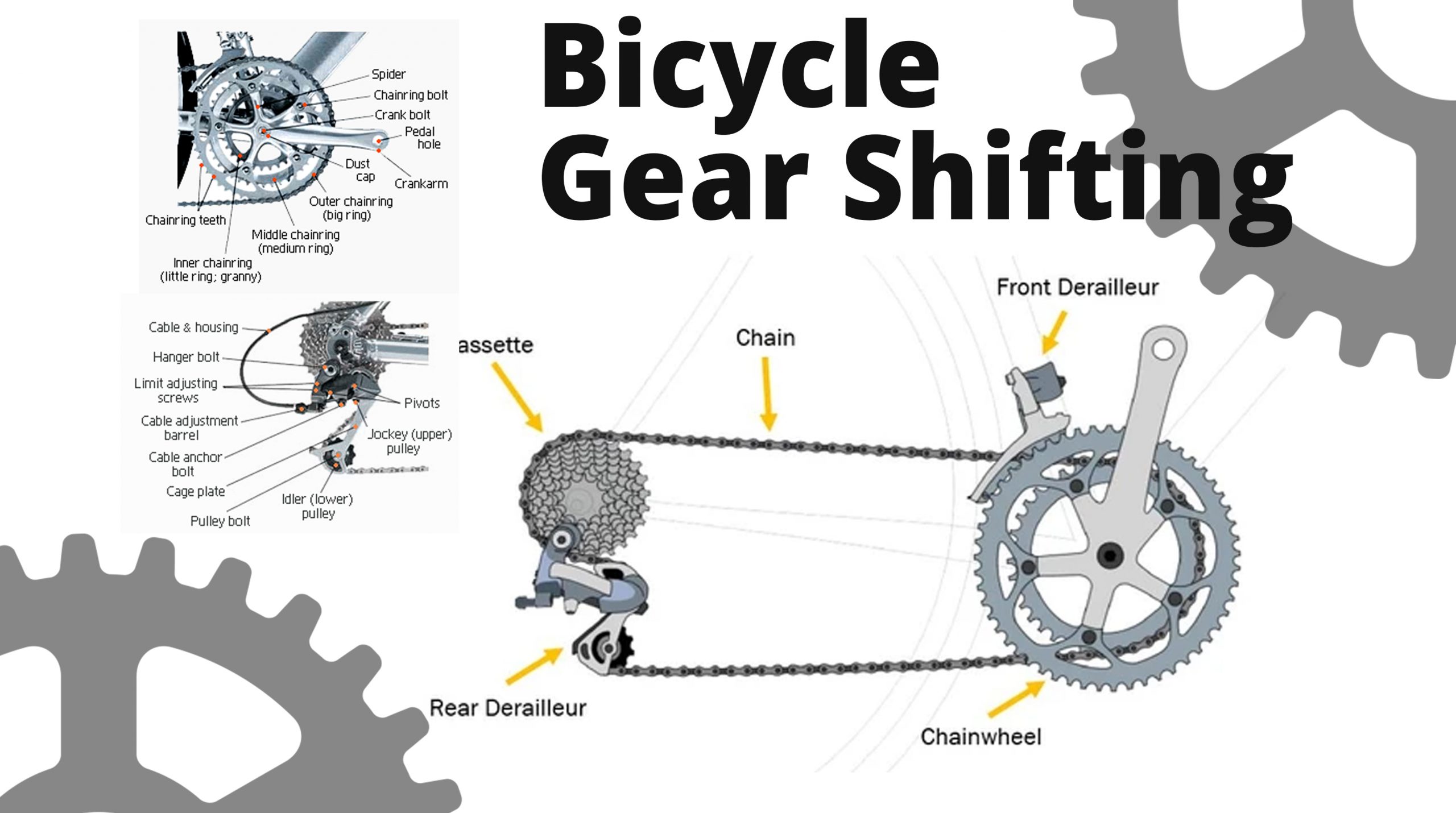Understanding the Basics of Road Bike Gearing
Gearing on a road bike is a complex system that enables riders to optimize their pedaling efficiency and comfort. At its core, gearing consists of a combination of chainrings, cassettes, derailleurs, and shifters that work in harmony to provide a wide range of gear ratios. The chainrings, typically located on the crankset, are responsible for transmitting power from the pedals to the rear wheel, while the cassette, mounted on the rear wheel, provides a series of gears that allow riders to adjust their pedaling resistance.
Derailleurs, which come in two types – front and rear – play a crucial role in shifting the chain between different gears. The front derailleur is responsible for shifting the chain between the chainrings, while the rear derailleur shifts the chain between the cassette’s gears. Shifters, typically located on the handlebars, allow riders to control the derailleurs and switch between gears.
Proper gearing on a road bike is essential for efficient pedaling and comfortable riding. When riders use the correct gear for the terrain, they can maintain a consistent cadence and avoid putting excessive strain on their muscles. This, in turn, can help reduce fatigue and improve overall performance. Furthermore, proper gearing can also help prevent damage to the bike’s components, such as the chain and cassette, by reducing wear and tear.
In addition to its performance benefits, proper gearing on a road bike can also enhance the overall riding experience. By providing a wide range of gear ratios, riders can tackle various terrain types with confidence, from steep hills to flat plains. This versatility makes road bikes an excellent choice for riders who enjoy exploring different types of terrain and pushing their limits.
As riders become more experienced, they can experiment with different gearing setups to optimize their performance. This may involve adjusting the chainring and cassette combinations, fine-tuning the derailleurs, and exploring different shifter configurations. By understanding the basics of road bike gearing, riders can unlock the full potential of their bike and enjoy a more efficient, comfortable, and enjoyable riding experience.
How to Choose the Right Gears for Your Road Bike
When it comes to gearing on a road bike, selecting the optimal gear combination is crucial for efficient pedaling and comfortable riding. The right gear setup can make a significant difference in a rider’s performance, especially when tackling various terrain types. To choose the right gears for your road bike, it’s essential to consider the type of riding you’ll be doing, the terrain you’ll be covering, and your personal preferences.
For flat terrain, a gear combination with a larger chainring and a smaller cassette is ideal. This setup provides a higher gear ratio, allowing riders to maintain a fast pace with minimal effort. On the other hand, for hilly or mountainous terrain, a gear combination with a smaller chainring and a larger cassette is more suitable. This setup provides a lower gear ratio, making it easier for riders to tackle steep inclines.
Cassette and chainring sizes play a significant role in determining gear ratios. A larger cassette provides a wider range of gears, making it easier to tackle varying terrain types. However, it’s essential to ensure that the cassette is compatible with the chainring and derailleur. Chainring sizes also impact gear ratios, with smaller chainrings providing lower gear ratios and larger chainrings providing higher gear ratios.
When selecting gears for your road bike, consider the following factors:
- Terrain type: Flat, hilly, or mountainous
- Riding style: Endurance, racing, or commuting
- Personal preferences: Cadence, gear ratio, and shifting style
- Component compatibility: Cassette, chainring, and derailleur compatibility
By considering these factors and selecting the right gear combination, riders can optimize their gearing on a road bike for efficient pedaling and comfortable riding. Whether you’re tackling flat terrain or tackling steep inclines, the right gear setup can make a significant difference in your performance and overall riding experience.
The Benefits of Compact Cranksets and Wide-Range Cassettes
When it comes to gearing on a road bike, compact cranksets and wide-range cassettes have become increasingly popular among riders. These components offer a range of benefits, including improved climbing ability, increased gear range, and enhanced overall performance.
Compact cranksets, typically featuring a 50/34 or 52/36 chainring combination, provide a lower gear ratio than traditional cranksets. This makes it easier for riders to tackle steep inclines and maintain a steady pace on hilly terrain. Additionally, compact cranksets often feature a narrower Q-factor, which can improve pedaling efficiency and reduce fatigue.
Wide-range cassettes, typically featuring an 11-28 or 11-32 tooth range, offer a wider range of gears than traditional cassettes. This allows riders to tackle varying terrain types with confidence, from flat plains to steep mountains. Wide-range cassettes also provide a smoother transition between gears, making it easier for riders to maintain a consistent cadence.
Several groupsets, including Shimano’s Ultegra and SRAM’s Rival, offer compact cranksets and wide-range cassettes as part of their component packages. These groupsets provide a range of benefits, including improved shifting performance, increased durability, and enhanced overall performance.
The benefits of compact cranksets and wide-range cassettes are numerous. By providing a lower gear ratio and wider range of gears, these components make it easier for riders to tackle challenging terrain and maintain a steady pace. Additionally, compact cranksets and wide-range cassettes can improve pedaling efficiency, reduce fatigue, and enhance overall performance.
When considering compact cranksets and wide-range cassettes, riders should keep the following factors in mind:
- Terrain type: Compact cranksets and wide-range cassettes are ideal for hilly or mountainous terrain.
- Riding style: These components are suitable for endurance, racing, and commuting riders.
- Component compatibility: Ensure that the compact crankset and wide-range cassette are compatible with the bike’s derailleur and other components.
By incorporating compact cranksets and wide-range cassettes into their gearing setup, riders can experience improved performance, increased efficiency, and enhanced overall riding experience.
Optimizing Your Gearing for Efficient Pedaling
Optimizing your gearing on a road bike is crucial for efficient pedaling and comfortable riding. By selecting the right chainring and cassette combinations, adjusting the derailleurs, and tensioning the cables, riders can ensure that their bike is running smoothly and efficiently.
Proper chainring and cassette combinations are essential for efficient pedaling. A chainring with a smaller tooth count provides a lower gear ratio, making it easier to tackle steep inclines and maintain a steady pace on hilly terrain. A cassette with a wider range of gears provides a smoother transition between gears, making it easier for riders to maintain a consistent cadence.
Derailleur adjustment is also critical for efficient pedaling. The derailleurs should be adjusted to ensure that the chain is properly aligned and that the gears are shifting smoothly. This can be achieved by adjusting the limit screws and the barrel adjuster.
Cable tensioning is also important for efficient pedaling. The cables should be tensioned to ensure that the gears are shifting smoothly and that the derailleurs are functioning properly. This can be achieved by adjusting the cable tension and the derailleur alignment.
Additionally, riders can optimize their gearing by using gear calculators and online tools. These tools can help riders determine the optimal gear combination for their specific riding style and terrain.
Some popular gear calculators and online tools include:
- Shimano’s Gear Calculator
- SRAM’s Gear Calculator
- BikeCalc
- GearInches
By using these tools and following the tips outlined above, riders can optimize their gearing on a road bike for efficient pedaling and comfortable riding.
It’s also important to note that optimizing gearing is not a one-time task. Riders should regularly check and adjust their gearing to ensure that it is running smoothly and efficiently.
Regular maintenance tasks include:
- Checking and adjusting the derailleurs
- Tensioning the cables
- Cleaning and lubricating the chain
- Inspecting the cassette and chainrings for wear
By following these tips and regularly maintaining their gearing, riders can ensure that their road bike is running smoothly and efficiently, providing a comfortable and enjoyable riding experience.
Common Gearing Mistakes to Avoid on a Road Bike
When it comes to gearing on a road bike, there are several common mistakes that riders make that can lead to inefficient pedaling, discomfort, and even damage to the bike’s components. By being aware of these mistakes, riders can take steps to avoid them and ensure a smoother, more enjoyable ride.
One of the most common mistakes riders make is using the wrong gear for the terrain. This can lead to inefficient pedaling, as the rider may be using too much energy to pedal or struggling to maintain a steady pace. To avoid this mistake, riders should make sure to adjust their gearing according to the terrain they are riding on.
Another common mistake is neglecting to adjust the derailleurs. Derailleurs are critical components of a road bike’s gearing system, and if they are not properly adjusted, they can cause the chain to rub against the frame or skip gears. To avoid this mistake, riders should regularly check and adjust their derailleurs to ensure they are functioning properly.
Ignoring worn-out components is another common mistake riders make. Worn-out components, such as chainrings and cassettes, can cause the bike’s gearing system to malfunction, leading to inefficient pedaling and discomfort. To avoid this mistake, riders should regularly inspect their components and replace them as needed.
Using the wrong type of chain is also a common mistake. Chains come in different widths and types, and using the wrong type can cause the bike’s gearing system to malfunction. To avoid this mistake, riders should make sure to use the correct type of chain for their bike’s gearing system.
Not cleaning and lubricating the chain is another common mistake. A dirty and dry chain can cause the bike’s gearing system to malfunction, leading to inefficient pedaling and discomfort. To avoid this mistake, riders should regularly clean and lubricate their chain to keep it running smoothly.
By being aware of these common mistakes, riders can take steps to avoid them and ensure a smoother, more enjoyable ride. By properly adjusting their gearing, regularly inspecting and maintaining their components, and using the correct type of chain, riders can optimize their gearing on a road bike for efficient pedaling and comfortable riding.
Some popular tools and resources for avoiding common gearing mistakes include:
- Shimano’s Gearing Guide
- SRAM’s Gearing Guide
- BikeCalc
- GearInches
By using these tools and resources, riders can ensure that their gearing on a road bike is properly adjusted and maintained, leading to a smoother, more enjoyable ride.
Upgrading Your Road Bike’s Gearing: What to Consider
Upgrading your road bike’s gearing can be a great way to improve your riding experience and performance. However, with so many options available, it can be overwhelming to decide what to upgrade and how to do it. In this article, we will discuss the key factors to consider when upgrading your road bike’s gearing.
Compatibility is a crucial factor to consider when upgrading your road bike’s gearing. Make sure that the new components are compatible with your existing bike and components. Check the manufacturer’s specifications and consult with a professional mechanic if you are unsure.
Durability is another important factor to consider. Look for components that are built to last and can withstand the rigors of regular riding. Consider the materials used, the construction, and the reputation of the manufacturer.
Budget is also an important consideration. Upgrading your road bike’s gearing can be expensive, so set a budget and stick to it. Consider the cost of the components, the labor costs, and any additional costs such as cables and housing.
When upgrading your road bike’s gearing, consider the following components:
- Chainrings: Look for chainrings that are compatible with your existing crankset and provide the desired gear ratio.
- Cassettes: Consider cassettes that offer a wide range of gears and are compatible with your existing derailleur.
- Derailleurs: Look for derailleurs that are compatible with your existing shifters and provide smooth and precise shifting.
- Shifters: Consider shifters that offer precise and smooth shifting and are compatible with your existing derailleurs.
Some popular options for upgrading your road bike’s gearing include:
- Shimano’s Ultegra and Dura-Ace groupsets
- SRAM’s Rival and Force groupsets
- Campagnolo’s Chorus and Record groupsets
When upgrading your road bike’s gearing, it’s also important to consider the following tips:
- Consult with a professional mechanic to ensure that the upgrade is done correctly and safely.
- Test the new components before taking them on a long ride.
- Make sure to adjust the derailleurs and shifters properly to ensure smooth and precise shifting.
By considering these factors and tips, you can upgrade your road bike’s gearing and improve your riding experience and performance.
Real-World Examples of Effective Gearing Setups
When it comes to gearing on a road bike, there is no one-size-fits-all solution. Different types of bikes and riding styles require different gearing setups. In this article, we will showcase real-world examples of effective gearing setups for different types of road bikes, including endurance, racing, and commuting bikes.
Endurance Bikes:
Endurance bikes are designed for long-distance riding and comfort. A typical gearing setup for an endurance bike might include a compact crankset with a 50/34 chainring combination and a wide-range cassette with an 11-28 or 11-32 tooth range. This setup provides a wide range of gears for tackling varying terrain and a comfortable cadence for long-distance riding.
Racing Bikes:
Racing bikes are designed for speed and efficiency. A typical gearing setup for a racing bike might include a standard crankset with a 53/39 chainring combination and a narrow-range cassette with a 12-25 or 12-27 tooth range. This setup provides a high gear ratio for fast riding and a narrow range of gears for precise shifting.
Commuting Bikes:
Commuting bikes are designed for practicality and versatility. A typical gearing setup for a commuting bike might include a triple crankset with a 48/36/26 chainring combination and a wide-range cassette with an 11-32 or 11-36 tooth range. This setup provides a wide range of gears for tackling varying terrain and a comfortable cadence for commuting.
Some popular products for endurance, racing, and commuting bikes include:
- Shimano’s Ultegra and Dura-Ace groupsets
- SRAM’s Rival and Force groupsets
- Campagnolo’s Chorus and Record groupsets
When choosing a gearing setup for your road bike, consider the following factors:
- Terrain: Consider the type of terrain you will be riding on and choose a gearing setup that provides a comfortable cadence and a wide range of gears.
- Riding style: Consider your riding style and choose a gearing setup that provides the right balance of speed and comfort.
- Components: Consider the components you are using and choose a gearing setup that is compatible with your existing components.
By considering these factors and choosing the right gearing setup for your road bike, you can optimize your performance and enjoy a smoother, more comfortable ride.
Fine-Tuning Your Gearing for Maximum Performance
Fine-tuning your gearing on a road bike can make a significant difference in your performance and overall riding experience. By optimizing your gear ratios, adjusting your derailleur limits, and using gear calculators, you can ensure that your bike is running smoothly and efficiently.
Optimizing your gear ratios is critical for maximum performance. By adjusting the chainring and cassette combinations, you can achieve the perfect balance of speed and comfort. For example, a 53/39 chainring combination with an 11-25 cassette provides a high gear ratio for fast riding, while a 50/34 chainring combination with an 11-28 cassette provides a lower gear ratio for climbing and comfort.
Adjusting your derailleur limits is also important for fine-tuning your gearing. By adjusting the limit screws, you can ensure that your derailleurs are shifting smoothly and precisely. This is especially important for racing and high-performance riding, where precise shifting is critical.
Using gear calculators is another way to fine-tune your gearing. Gear calculators allow you to calculate the optimal gear ratio for your specific riding style and terrain. By inputting your chainring and cassette combinations, as well as your desired gear ratio, you can determine the perfect gearing setup for your road bike.
Some popular gear calculators include:
- Shimano’s Gear Calculator
- SRAM’s Gear Calculator
- BikeCalc
- GearInches
When fine-tuning your gearing, consider the following tips:
- Experiment with different chainring and cassette combinations to find the perfect balance of speed and comfort.
- Adjust your derailleur limits regularly to ensure smooth and precise shifting.
- Use gear calculators to determine the optimal gear ratio for your specific riding style and terrain.
By fine-tuning your gearing, you can optimize your performance and enjoy a smoother, more comfortable ride. Remember to always consult with a professional mechanic if you are unsure about any aspect of your gearing setup.








